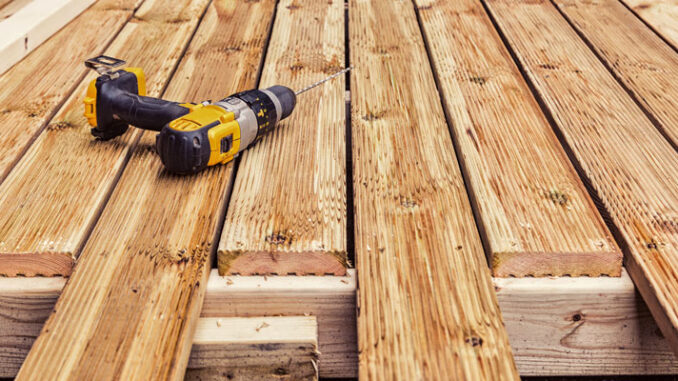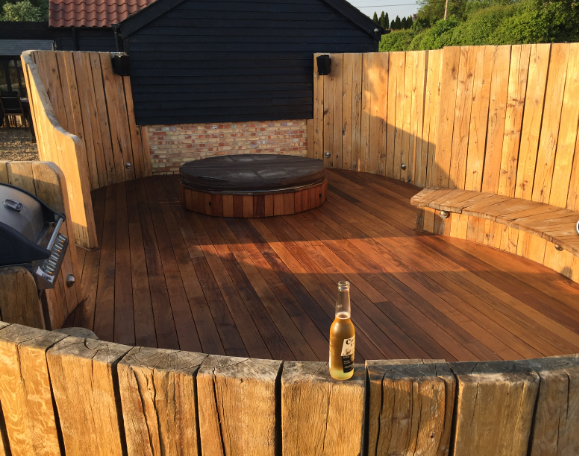
Decking wood, often overlooked in the grand scheme of home improvement projects, holds significant importance both aesthetically and functionally. While it might seem like a straightforward choice, there’s a myriad of aspects to consider when selecting the perfect decking wood for your outdoor space. From durability to maintenance requirements, understanding these factors can make all the difference in the longevity and appeal of your deck.
Table of Contents
- Understanding the Types of Decking Wood
- Factors to Consider When Choosing Decking Wood
- Environmental Considerations
- Conclusion
- What are the main differences between hardwood and softwood decking wood?
- What is composite decking, and how does it compare to traditional wood options?
- What factors should I consider when choosing decking wood?
- How can I ensure that my decking wood is sourced sustainably?
- Are there eco-friendly alternatives to traditional decking wood?
Understanding the Types of Decking Wood
Hardwood vs. Softwood: Deciphering the Differences
When delving into the realm of decking wood, one of the primary distinctions to grasp is the difference between hardwood and softwood options. Hardwoods, such as ipe and mahogany, are renowned for their durability and resistance to rot and decay. On the other hand, softwoods like cedar and redwood offer natural beauty and affordability but may require more frequent maintenance to preserve their integrity.
Composite Decking: A Modern Alternative
In recent years, composite decking has emerged as a popular alternative to traditional wood options. Composed of a blend of wood fibers and recycled plastic, composite decking offers the appeal of natural wood with enhanced durability and minimal maintenance requirements. With advancements in technology, composite decking now comes in a variety of colors and textures, providing homeowners with endless design possibilities.
Factors to Consider When Choosing Decking Wood
Durability and Longevity
One of the most critical considerations when selecting decking wood is its durability and longevity. Assessing factors such as resistance to rot, decay, insects, and weathering can help determine the lifespan of your deck. Hardwood options typically excel in this aspect, offering decades of service life with minimal maintenance.
Maintenance Requirements
Maintenance plays a significant role in preserving the appearance and structural integrity of your deck. While hardwoods may require periodic sealing or staining to maintain their color and finish, softwoods and composite decking often necessitate less maintenance. Understanding the maintenance requirements of your chosen decking wood can help you plan and budget for upkeep effectively.
Aesthetic Appeal
Beyond functionality, the aesthetic appeal of decking wood can significantly impact the overall look and feel of your outdoor space. Hardwoods boast rich, natural hues and distinct grain patterns that lend a sense of elegance to any deck. Conversely, softwoods offer a warm, rustic charm that complements various architectural styles. Additionally, composite decking provides versatility in design, allowing homeowners to achieve the desired aesthetic without sacrificing durability.
Environmental Considerations
Sustainable Sourcing
In an era where sustainability is paramount, opting for decking wood sourced from responsibly managed forests can help mitigate environmental impact. Look for certifications such as the Forest Stewardship Council (FSC) or Sustainable Forestry Initiative (SFI) to ensure that the wood products you choose are harvested ethically and sustainably.
Eco-Friendly Alternatives
For environmentally conscious homeowners, exploring eco-friendly alternatives to traditional decking wood is worth considering. Recycled plastic lumber, bamboo, and reclaimed wood offer sustainable options that minimize deforestation and reduce waste. These materials not only contribute to a greener planet but also provide durable and aesthetically pleasing solutions for outdoor living spaces.
Conclusion
In conclusion, decking wood encompasses a vast array of options, each with its unique characteristics and considerations. By understanding the nuances of hardwoods, softwoods, and composite decking, homeowners can make informed decisions that align with their aesthetic preferences, budget, and environmental values. Whether you prioritize durability, low maintenance, or eco-friendliness, there’s a decking wood option tailored to meet your needs and enhance your outdoor living experience.

Frequently Asked Questions (FAQs)
What are the main differences between hardwood and softwood decking wood?
Hardwood decking wood, such as ipe and mahogany, is known for its durability and resistance to rot and decay. Softwood options like cedar and redwood offer natural beauty and affordability but may require more frequent maintenance to preserve their integrity.
What is composite decking, and how does it compare to traditional wood options?
Composite decking is a modern alternative to traditional wood decking, composed of a blend of wood fibers and recycled plastic. It offers the appeal of natural wood with enhanced durability and minimal maintenance requirements. Composite decking comes in various colors and textures, providing homeowners with versatile design options.
What factors should I consider when choosing decking wood?
When selecting decking wood, consider factors such as durability, maintenance requirements, and aesthetic appeal. Assessing the wood’s resistance to rot, decay, insects, and weathering can help determine its longevity. Additionally, think about the maintenance needs of your chosen wood and how it aligns with your desired aesthetic for your outdoor space.
How can I ensure that my decking wood is sourced sustainably?
Look for decking wood that is certified by organizations such as the Forest Stewardship Council (FSC) or the Sustainable Forestry Initiative (SFI). These certifications indicate that the wood is sourced from responsibly managed forests, minimizing environmental impact.
Are there eco-friendly alternatives to traditional decking wood?
Yes, several eco-friendly alternatives to traditional decking wood are available. Recycled plastic lumber, bamboo, and reclaimed wood are sustainable options that minimize deforestation and reduce waste. These materials offer durability and aesthetic appeal while contributing to a greener planet.
